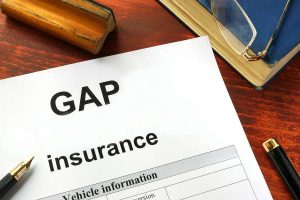Gap insurance is a type of policy that helps cover the difference between what you owe on your car loan and what your car is worth in the event of an accident. If you’ve purchased gap insurance for your vehicle, it’s important to know if you’re actually covered in the event of an accident. In this blog post, we’ll provide an overview of how to check if you’re covered by gap insurance. Read on to learn more!
Log into your account
If you purchased gap insurance through your current auto insurance provider, the first step to verifying your coverage is to log into your account. If you do not have an account set up with your provider, be sure to register for one so you can review your policy details and manage your payments. After logging in, go to the “My Policies” tab and find the section for gap insurance. There should be a breakdown of all of your coverage options, as well as the amount of coverage and any applicable deductibles. This should give you a good indication of what type of protection you have.
Call your insurance company
If you are unsure whether you are covered by gap insurance or would like more information, your best option is to call your insurance company directly. Ask them to verify your coverage and explain exactly what it entails. Be sure to get the name of the person you speak with and the date and time of the call for your records.
When speaking with your insurance company representative, be prepared to provide them with details such as:
• Your policy number
• The year, make, and model of your car
• The type of coverage you have
• Your deductible amount
Your insurance company should be able to tell you if you are covered by gap insurance, how much coverage you have, and what type of coverage it is. This will allow you to determine if your gap insurance covers any unforeseen expenses, such as repairs after an accident or theft.
If you need additional assistance in understanding your gap insurance coverage, ask your insurance company representative if they offer any resources that could help. It may also be beneficial to review the policy documents provided by your insurance company to better understand your coverage and any applicable deductibles.
Review your policy documents
When verifying your gap insurance coverage, one of the most important steps is to review your policy documents. Your insurance policy will contain all the necessary information about your coverage, including the types and levels of protection you have. It will also detail the specific circumstances in which gap insurance will apply and any exclusions or limits to coverage. Make sure to carefully read through the document so you understand what exactly you’re covered for.
When reviewing your policy documents, look for terms such as “totaled vehicle,” “gap coverage,” “gap waiver,” or “gap protection.” If you don’t see any of these terms, your policy may not include gap insurance. Also be sure to note any exclusions or limits on coverage.
If you still have questions or need clarification after reading through your policy documents, contact your insurance company and ask them to explain your coverage in more detail. They should be able to provide you with a clear explanation of the terms of your coverage.
Check with your car dealer
When you purchase a new or used car, you may be offered gap insurance. It’s important to understand the coverage and make sure you are protected. Checking with your car dealer is one way to verify your coverage.
Your dealer should be able to provide details of your gap insurance policy. They can explain what the coverage includes and what circumstances it applies to. They should also be able to provide you with a copy of the insurance policy. Make sure to ask for a copy so that you can review the terms and conditions for yourself.
The dealer should also be able to provide information about how to file a claim in the event you need to do so. Knowing this ahead of time can help you avoid any delays in getting the coverage you need.
Finally, if your dealer is unable to provide you with all of the necessary information, it’s important to contact your insurance company directly. They will be able to answer any questions you may have and provide you with the necessary documents.
